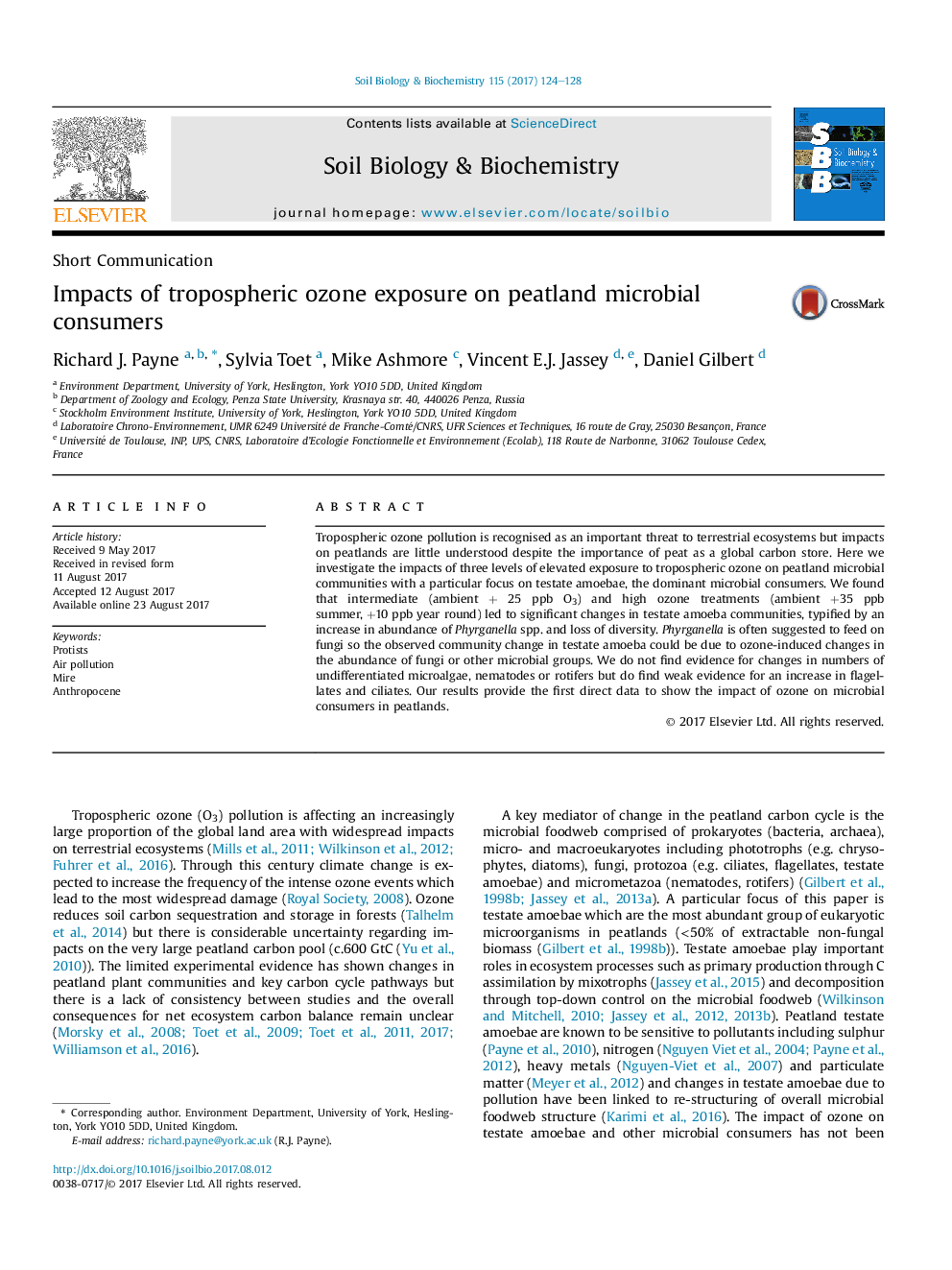| Article ID | Journal | Published Year | Pages | File Type |
|---|---|---|---|---|
| 5516232 | Soil Biology and Biochemistry | 2017 | 5 Pages |
â¢The impacts of tropospheric ozone exposure below-ground are poorly understood.â¢Impacts are particularly poorly studied in peatlands.â¢We conducted a mesocosm experiment to investigate impacts on microbial consumers.â¢We found distinct changes, typified by an increase in Phyrganella spp.â¢This is the first direct evidence for ozone impacts on peatland microbial consumers.
Tropospheric ozone pollution is recognised as an important threat to terrestrial ecosystems but impacts on peatlands are little understood despite the importance of peat as a global carbon store. Here we investigate the impacts of three levels of elevated exposure to tropospheric ozone on peatland microbial communities with a particular focus on testate amoebae, the dominant microbial consumers. We found that intermediate (ambient + 25 ppb O3) and high ozone treatments (ambient +35 ppb summer, +10 ppb year round) led to significant changes in testate amoeba communities, typified by an increase in abundance of Phyrganella spp. and loss of diversity. Phyrganella is often suggested to feed on fungi so the observed community change in testate amoeba could be due to ozone-induced changes in the abundance of fungi or other microbial groups. We do not find evidence for changes in numbers of undifferentiated microalgae, nematodes or rotifers but do find weak evidence for an increase in flagellates and ciliates. Our results provide the first direct data to show the impact of ozone on microbial consumers in peatlands.
